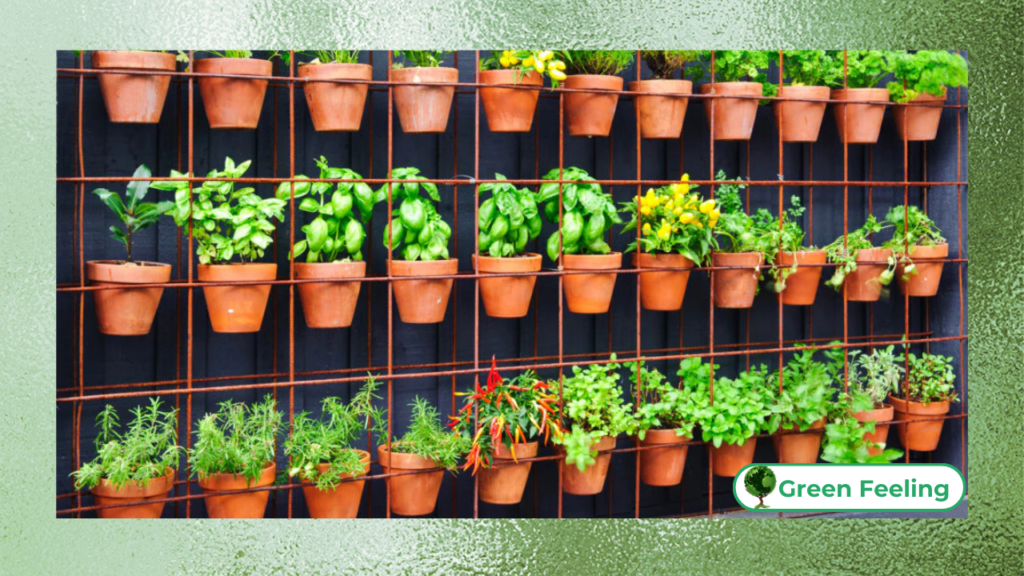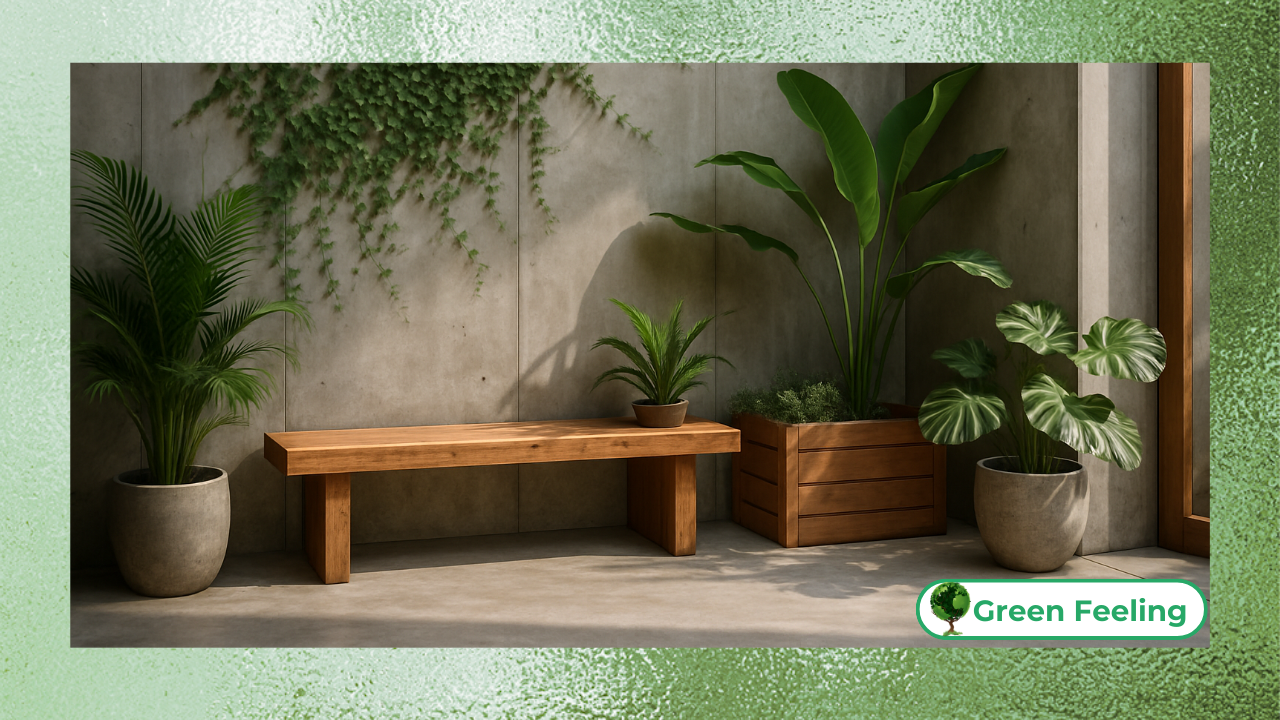Vertical Gardens: The Green in Urban Spaces
As urbanization continues to reshape our world, cities are facing unprecedented challenges related to pollution, heat islands, and the loss of green spaces.

Vertical gardens, also known as green walls, have emerged as an innovative solution to these problems. These living installations not only enhance the aesthetic appeal of urban environments but also provide numerous environmental and social benefits.
This article explores the concept of vertical gardens, their advantages, challenges, and their role in creating sustainable cities. By examining successful examples and future trends, we aim to highlight how vertical gardens can transform urban landscapes.
The Rise of Vertical Gardens
Urban areas are often characterized by concrete jungles, where green spaces are scarce and environmental degradation is rampant. Vertical gardens offer a way to reintroduce nature into cities, even in the most densely populated areas.
These gardens consist of plants grown on vertical surfaces, such as walls, facades, and even indoor spaces, using specialized systems that provide water, nutrients, and structural support.
The concept of vertical gardens is not new, but it has gained significant traction in recent years due to advancements in technology and growing awareness of environmental issues.
From the iconic vertical gardens of Patrick Blanc in Paris to the lush green walls in Singapore, these installations are becoming a symbol of sustainable urban design.
+ Nature and Design: Biophilic Architecture and Its Practical Applications
Principles of Vertical Gardens
Vertical gardens are built on a foundation of key principles that ensure their success and sustainability. These principles guide the design, installation, and maintenance of green walls, making them both functional and environmentally friendly. Below are the core principles of vertical gardens:
- Plant Selection: Choosing species that are well-suited to the local climate and require minimal maintenance.
- Irrigation Systems: Using efficient watering systems, such as drip irrigation, to conserve water.
- Structural Support: Ensuring that the wall or surface can support the weight of the plants and growing medium.
- Nutrient Delivery: Providing plants with the necessary nutrients through soil or hydroponic systems.
- Aesthetic Integration: Designing gardens that complement the architectural style of the building or space.
Benefits of Vertical Gardens

Vertical gardens offer a wide range of benefits, making them a valuable addition to urban environments. Here are some of the most significant advantages:
- Improved Air Quality: Plants absorb carbon dioxide and release oxygen, while also filtering pollutants from the air.
- Temperature Regulation: Green walls provide insulation, reducing the need for heating and cooling in buildings.
- Biodiversity: Vertical gardens create habitats for birds, insects, and other wildlife, enhancing urban biodiversity.
- Noise Reduction: Plants can absorb and deflect sound, reducing noise pollution in busy urban areas.
- Mental Health: Access to greenery has been shown to reduce stress and improve overall well-being.
- Aesthetic Appeal: Vertical gardens add beauty and vibrancy to otherwise dull urban landscapes.
Challenges in Implementing Vertical Gardens
Despite their benefits, vertical gardens face several challenges that can hinder their widespread adoption. These challenges vary depending on geographic, economic, and technical factors but often include:
- High Costs: The initial installation and maintenance of vertical gardens can be expensive.
- Structural Limitations: Not all buildings are suitable for supporting the weight of a green wall.
- Water Usage: Efficient irrigation systems are essential to prevent excessive water consumption.
- Maintenance: Regular care is required to ensure the health and longevity of the plants.
- Climate Compatibility: Selecting plants that can thrive in the local climate is crucial for success.
+ The Secrets of Brutalism: An analysis of concrete and functionality
Vertical Gardens Around the World: A Table Overview
Below is a table highlighting some of the world’s most notable vertical gardens and their key features:
| Location | City/Country | Key Features |
| Musée du Quai Branly | Paris, France |
Designed by Patrick Blanc; over 15,000 plants from 150 species.
|
| Gardens by the Bay | Singapore |
Iconic vertical gardens integrated with sustainable architecture.
|
| One Central Park | Sydney, Australia |
Features the world’s tallest vertical garden; uses hydroponic systems.
|
| CaixaForum Museum | Madrid, Spain |
A living wall with over 15,000 plants; designed for energy efficiency.
|
| Bosco Verticale | Milan, Italy |
Twin residential towers with over 900 trees and 20,000 plants.
|
The Role of Technology in Vertical Gardens
Technology plays a crucial role in the success of vertical gardens. Innovations in irrigation systems, plant selection, and structural engineering have made it easier to create and maintain green walls.
For example, smart irrigation systems use sensors to optimize water usage, while modular planting systems simplify installation and maintenance.
As landscape architect once said,
“Vertical gardens are not just about aesthetics; they are about creating a connection between humans and nature in urban spaces” – Patrick Blanc.
This quote highlights the importance of integrating technology and design to create functional and beautiful green walls.
Policy and Community Engagement
Government policies and community engagement are essential for the widespread adoption of vertical gardens.
Policies such as green building certifications, tax incentives, and urban greening initiatives can encourage the development of vertical gardens. Meanwhile, community involvement ensures that these installations meet the needs and preferences of local residents.
For instance, Singapore’s success in integrating vertical gardens into its urban landscape is largely due to strong government support and public enthusiasm. The city-state has implemented policies that promote green building practices and has actively engaged citizens in urban greening projects.
Key Steps Toward Implementing Vertical Gardens
Here are some actionable steps for creating and maintaining vertical gardens:
- Conduct Feasibility Studies: Assess the structural and environmental suitability of the site.
- Choose Appropriate Plants: Select species that are well-adapted to the local climate and require minimal maintenance.
- Install Efficient Irrigation Systems: Use drip irrigation or hydroponic systems to conserve water.
- Engage Experts: Work with landscape architects and horticulturists to design and install the garden.
- Monitor and Maintain: Regularly check the health of the plants and the functionality of the systems.
- Educate the Community: Raise awareness about the benefits of vertical gardens and encourage public participation.
+ The Role of Oscar Niemeyer and Burle Marx in Brazilian Architecture
Did You Enjoy Learning About Vertical Gardens?
Vertical gardens represent a transformative approach to urban design, offering a sustainable way to reintroduce nature into cities. By improving air quality, regulating temperature, and enhancing biodiversity, these living installations provide numerous environmental and social benefits.
However, their success depends on careful planning, community engagement, and ongoing maintenance.
As environmentalist once said,
“We are the environment, and the environment is us.” – David Suzuki.
This quote serves as a powerful reminder of the interconnectedness of humans and nature, and the importance of creating green spaces in urban areas.
Conclusion
Vertical gardens are more than just a trend; they are a vital component of sustainable urban development. By integrating nature into the built environment, these gardens help address some of the most pressing challenges facing cities today, from pollution to climate change.
While challenges remain, the success of vertical gardens in cities like Paris, Singapore, and Milan demonstrates their potential to transform urban landscapes.
As we look to the future, it is clear that vertical gardens will play a crucial role in creating healthier, more resilient cities. By embracing this green revolution, we can build urban environments that are not only sustainable but also vibrant and inclusive.
References and Further Reading
- BLANC, P. The Vertical Garden: From Nature to the City. W.W. Norton & Company, 2012.
- SUZUKI, D. The Sacred Balance: Rediscovering Our Place in Nature. Greystone Books, 2007.
- Musée du Quai Branly Vertical Garden – Patrick Blanc
- Gardens by the Bay – Singapore
- Bosco Verticale – Stefano Boeri Architetti






